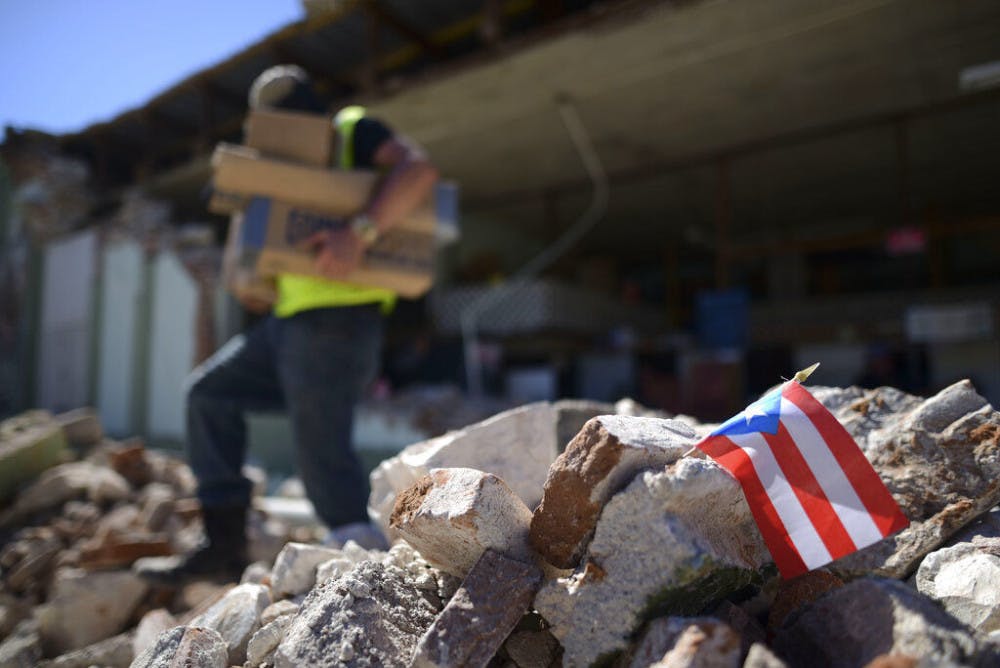Collapsed houses, crushed cars and rubble-filled streets clutter southern Puerto Rico, leaving hundreds of people in the street as they struggle through aftershocks.
The largest of a series of earthquakes that began Dec. 28 struck Puerto Rico Tuesday morning, killing one and injuring eight. The 6.4-magnitude earthquake was followed by dozens of aftershocks, according to The Associated Press.
The epicenter of the earthquake was about seven miles away from Guayanilla, the southern part of the island, according to the U.S. Geological Survey. Areas most affected by the earthquake and aftershocks were in the southernmost part of the island.
Natalia Machicote, a 21-year-old UF biology junior, is from Guaynabo in the northern part of Puerto Rico. Her family, including her grandmother, siblings, cousins and uncles were on the island when the earthquake struck.
She said she visited her family and friends in December.
“I left feeling fulfilled because I spent a lot of time with them, and now, here is this horrible news,” Machicote said.
She said she was grateful her family and friends live in the northern part of the island, but they still felt minor shakes.
Puerto Rico faced Category 5 Hurricane Maria in Sept. 2017 and still had power outages and uncleared landslides two years later. Now, these recent earthquakes have torn up streets and collapsed buildings as hundreds of people took to the streets, according to The Associated Press.
U.S. Senators Marco Rubio and Rick Scott of Florida and U.S. Rep. Jenniffer González-Colón of Puerto Rico sent a letter to President Donald Trump Tuesday supporting Puerto Rican Gov. Wanda Vázquez’s request that help be sent to Puerto Rico.
“The localities that are grappling with the effects of the earth tremors are smaller municipalities that do not have the necessary resources to handle the situation alone,” the senators and representative wrote. “It will be of great relief to the people of Puerto Rico to have the disaster support of the White House.”
Machicote said that after Maria, her family took preparations for emergencies more seriously, including storing essentials and gas.
“We’re still recovering from Maria,” Machicote said. “It’s all very sensitive still from that last hit.”
Alejandro Gonzalez, a 19-year-old UF biology sophomore, is a liaison for UEPA, La Unión de Estudiantes Puertorriqueños Activos, which translates to the Union for Puerto Rican Students.
Gonzalez is from San Juan, in north Puerto Rico. His family and his life is all in Puerto Rico, he said.
“Psychologically, it’s scary,” he said. “I’m nervous that another stronger one might appear tonight.”
UEPA still hasn’t met to discuss the earthquakes, but they will probably put together a food drive like they did for Hurricane Maria, Gonzalez said.
Both Machicote and Gonzalez want people to be aware of the tragedy and to help when possible.
“We do a really good job of coming together and truly facing whatever problem we’re confronted with,” Machicote said. “Whatever happens, I know we’re going to come together and get out of the situation.”
Contact Meghan McGlone at mmcglone@alligator.org. Follow her on Twitter @meggmcglone.
A Puerto Rican flag hangs within the rubble, after it was placed there where store owners and family help remove supplies from Ely Mer Mar hardware store, which partially collapsed after an earthquake struck Guanica, Puerto Rico, Tuesday, Jan. 7, 2020. A 6.4-magnitude earthquake struck Puerto Rico before dawn on Tuesday, killing one man, injuring others and collapsing buildings in the southern part of the island. (AP Photo/Carlos Giusti)

Meghan McGlone is a UF junior majoring in journalism and English, and this year she’s the City and County Commission reporter. In past years, she’s served as the University Editor, the Student Government reporter, and other positions. Her favorite past time is eating gummy worms and reading a good book.






